Weather can transform a ride. In this case, the sun's presence and total absence of any less-than-spectacular weather elevates the climb up the mighty Stelvio from brilliant to extraordinary. The surrounding snowy peaks shimmer and flowers are in bloom. It's so distracting; I wonder how anyone can be expected to concentrate purely on the road. I reluctantly drag myself back into the moment, remembering that this is the Gran Fondo Stelvio Santini and the clock is ticking - well, it is on this climb.

Earlier on we'd stopped for an agonisingly long time at a railway crossing. Normally such a situation would make me frantic but I find I'm relieved. Other riders use the opportunity to relieve themselves in a more literal manner, but for me this enforced rest stops suffices for me to grab a bar and stash my windproof.
This year's Gran Fondo Stelvio Santini is a hearteningly sociable affair, and the usual gran fondo battle for the quickest line over the asphalt is noticeably absent. This isn't to say that the riders didn't all reach ludicrous speeds on the first, long downhill (they did), but more a nod to the organisers' new approach: chip-timing on the uphills; non-competitive for the rest of the event, with the aim to shake off Italy's worldwide reputation for reckless riding in gran fondos.
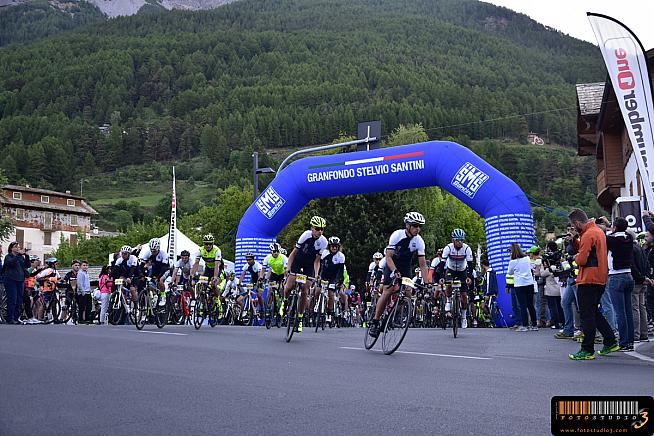
There are still slithers of snow on the sides of the road as I take on the hairpins up the Stelvio, but far less than when the Giro passed at the end of May and this exact same climb was broadcast live almost all over the world. The painted messages of support on the road add an even more impressive dimension to the scenery, and make me wish I was Senni or that I rode for FDJ.
About seven kilometres from the summit the gradient flattens off and the landscape opens out like a once unmanageable map with hastily smoothed-out edges. The steepest bit is done now and the finish line is almost visible. I tuck my body lower onto the bike and keep my head down. This is where I'd hoped to rely on a slipstream, but I'd left my riding mate earlier in the climb, plagued by cramp.
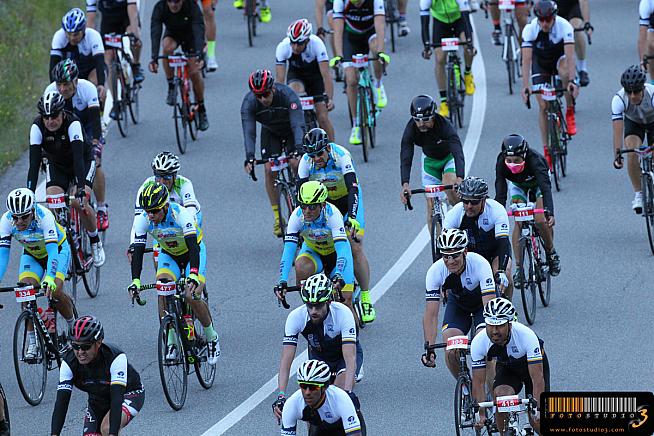
This gran fondo is the only one in Italy with the logistical challenge of separate start and finish locations. Its made even trickier as the finish happens to be at 2,757 metres above sea level on a pass that's popular with motorbikes and campervans throughout summer. Getting permission to close the road from 8am to 5pm is no easy task, but the organisers have pulled it off triumphantly once again.
Each of the three routes start in Bormio with a sweeping descent away from the Stelvio towards Sondalo. The shortest is 60km with 'just' the Stelvio to climb and a total of 1,950 metres of altitude gain. Then there's the 137km Medio with 3,500 metres of climbing, adding on a longer loop down the valley to include the short, steep climb to Teglio before weaving back up to begin the Stelvio. Remarkably the Lungo is only 13km further than the Medio but packs in an additional 1,000 metres of altitude by including the ascent of the iconic, leg-breaking joys of the Mortirolo.
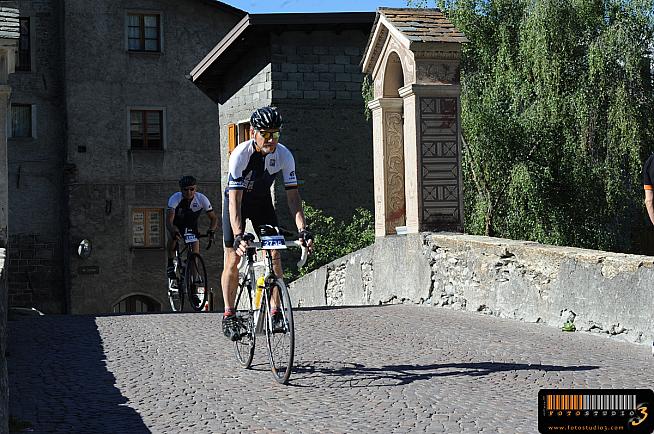
Wider and flatter now, the road threads its way up towards the top of the Passo Stelvio. Five kilometres to go. I've heard there's a good ridge run to the left of me and I look up, enthralled. I'll save it for another day. Past the church and the drinks station now; my bottle is almost empty but this isn't the most opportune moment to refill. I'd done that earlier in the day, savouring the opportunity to take my time at the feed stations. Now it was all about pedalling. Cracking five hours. Past the turning to the Umbrail. Four, no, just three kilometres to go.
I look around for someone to match my pace for the final part, but there's no one near. I'm oblivious to all but the sound of my pedalling. The sun is high in the sky and it's markedly different to 6am this morning when I'd recognised how delusional I'd be to try and keep up on the first descent. By 7.30, we had already made it through Tirano to tackle the first, lung-busting climb to Teglio, a personal favourite of mine. I regretted having dropped so far back through the peloton as it began to bottleneck, but my shouts of 'on yer' left' (loose translation) were enough to get me a shoulder-width gap on the side.
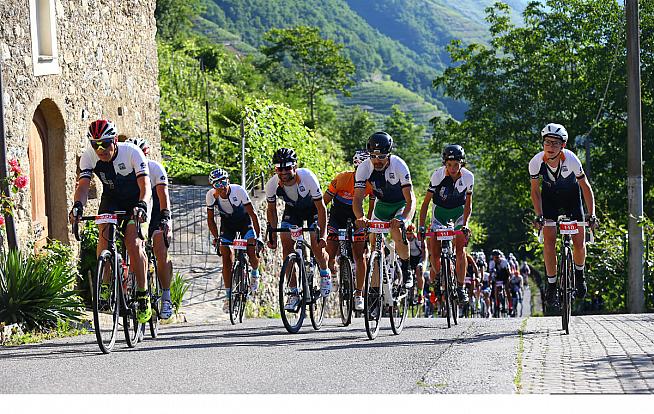
But Teglio is over in a quarter of an hour, just an amuse bouche for the main course: the Stelvio. For as long as I can remember, my dad has talked of little else than of riding its 30+ hairpins. As my Medio route brings me back through the old town in Bormio I wonder whether he's already finished his Corto and whether I'll spot his high-vis windproof on the descent. He's riding it with his oldest friend, who has come over by train with his folding Airnimal road bike. They've ridden 24-hour mountain bike events together, and bike-packed around various countries. But a famous climb like the Stelvio wasn't in their repertoire.
It wasn't in mine either until today, and as the final few kilometres tick by agonisingly slowly I'm mesmerised by the scenery and able to realise first-hand exactly what these climbs mean to cycling. And while neither me nor my dad ride for FDJ, we definitely fed off the painted encouragement on the asphalt, a relic of Giros gone by.
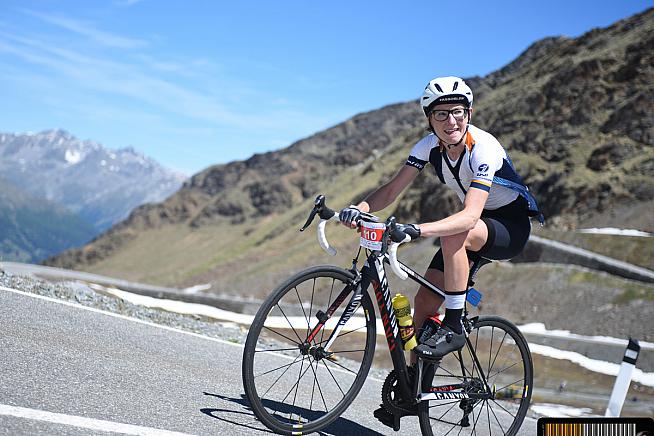
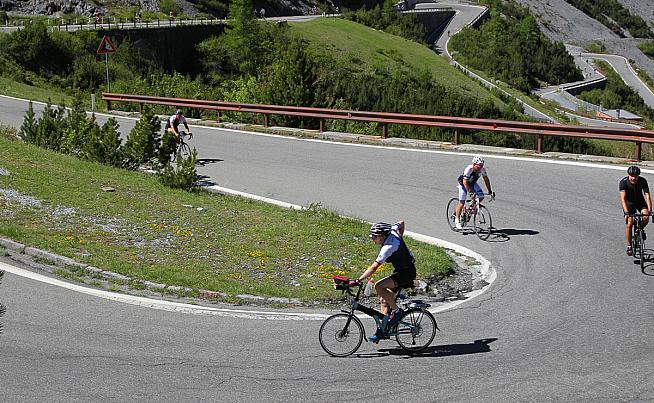
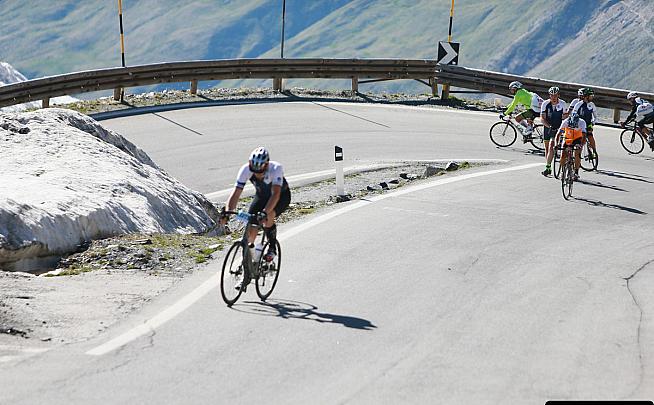
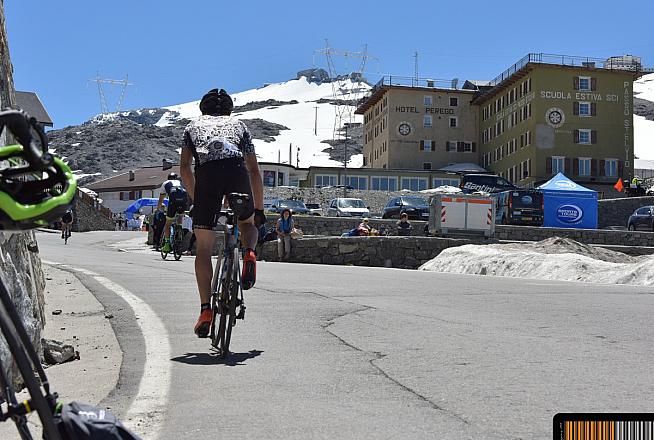
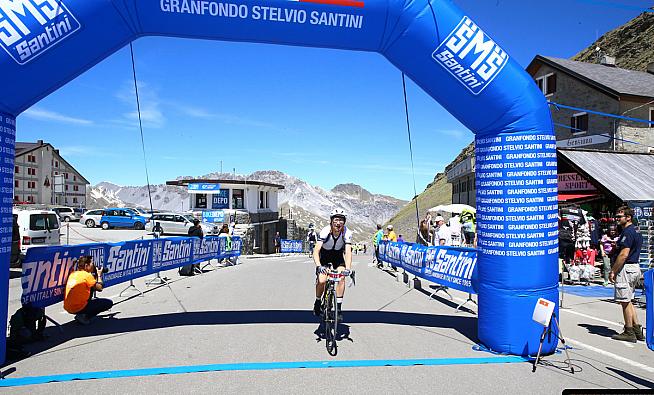
At the finish my 67-year-old dad is in his element, beaming from ear to ear and gesticulating wildly at the surroundings. He's never been so high before on a bike, and he's made great friends on the ride - from Longeaton, Colorado, Denmark and Sardinia. He digs suitably deep on the Stelvio to end up finishing a triumphant third in his category. I'm stoked with my result too, and while the Airnimal folding bike wasn't going to break any speed records on the climb, my dad's friend Steve is so enamoured with the scenery and his undertaking that times are pretty irrelevant.
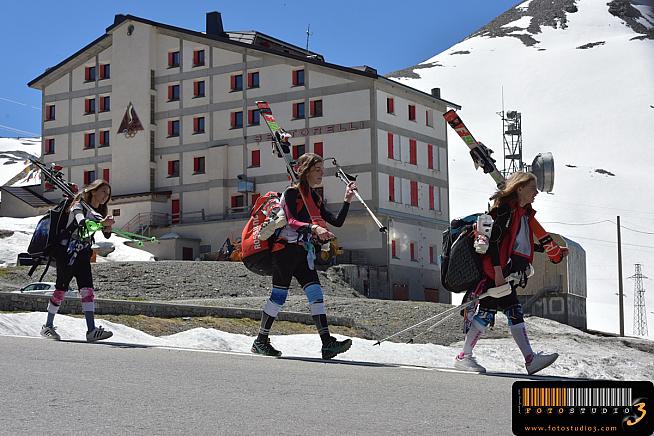
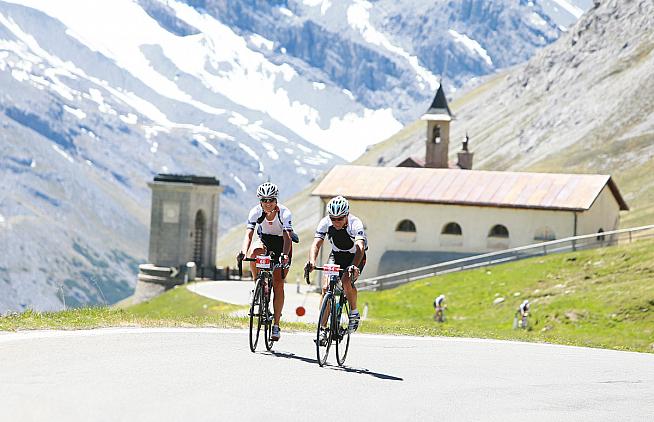
For me, times are a bit more relevant and in the end I ride to the second-fastest time on the Stelvio in one hour 21 minutes. Once down in Bormio at the pasta party and bountiful prize giving, there's a lot of talk about tactics. Those with the quickest times on the Stelvio - arguably the day's main event - were not necessarily those who'd ridden the full course fastest, proving that it pays to take your time, recover and regain strength for this notorious climb.
Even in our group of 10 that had ridden the bulk of the pre-Stelvio valley ascent, we'd sat up for a good hour and the tone of conversation had been honest, cheerful and refreshingly non-competitive.

This idea of an enduro-style ride with timed climbs brings a more dynamic feel to a gran fondo and dispels the myths of recklessness. Not only does this gran fondo open up pro turf to the masses, but you're handed a finishers' cap by Santini founder Pietro Santini himself at the finish, further embedding yourself into cycling's heritage.
As an amateur, the notion of riding a gran fondo amongst those harbouring competitive aspirations can be slightly alarming. The move towards hill-timing is a fairly divisive one, with some arguing that the non-timed total ride detracts from the challenge of this event.
Yet, isn't cycling's allure down to its inclusivity, lending us a hall pass to ride these iconic climbs without traffic and celebrate the landscape through which we're riding? If we're talking about purity, I'd put competition aside and just look at my dad.
Granfondo Stelvio Santini returns in 2018. For more information and to take part, visit www.granfondostelviosantini.com.
0 Comments





